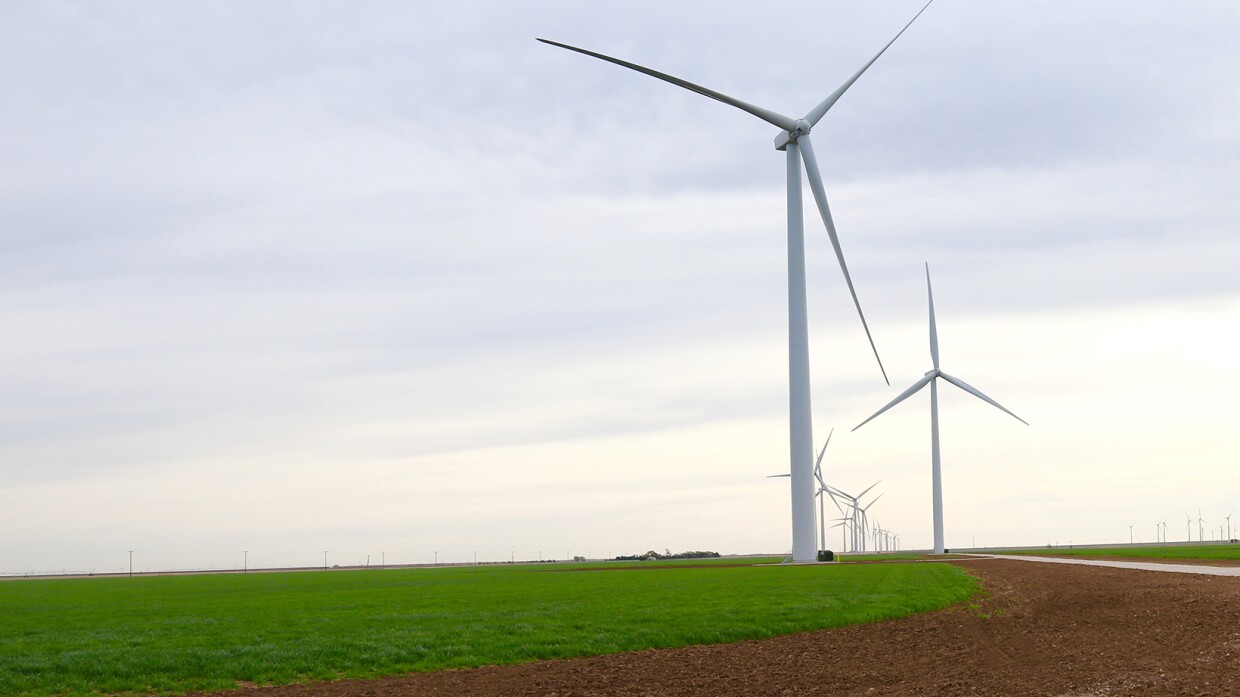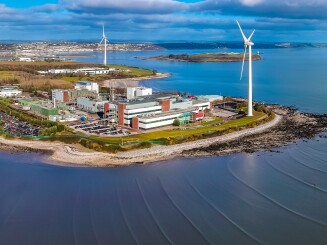- Home
- Our company
- Social impact
- Environmental sustainability
- Our approach to climate action
Our approach to climate action
As a healthcare company, Johnson & Johnson understands that climate health affects human health. Research shows that climate change is impacting health in many ways, including changing infectious disease patterns, increasing extreme weather events and heat and the risk of drought and food insecurity. We have taken sustained, long-term action to reduce our greenhouse gas (GHG) emissions, and we encourage our suppliers to do the same. We also work with like-minded partners to advance environmental health equity.

Our goals
We have been setting and achieving public facing climate goals for more than two decades. Our current goals were updated in 2024 to reflect the footprint of our two-sector company. They have been validated by the Science Based Targets initiative (SBTi).
In addition to our climate goals, we also have a longer-term ambition to reach net zero emissions across our value chain by 2045.
Climate Action Plan at-a-Glance
We continue to build on decades of climate action by reducing emissions across our global operations and engaging our suppliers on their decarbonization efforts.
Our operations
Advancing renewable electricity
We are wasting no time making progress towards our renewable electricity goal, because we know there is no time to waste. Today, 87% of our global electricity use comes from renewable sources. We have built more than 40 on-site renewable energy systems on properties in 20 countries and completed 14 deals for off-site renewable electricity.
100% renewable electricity in Europe, the United States and Canada
We are now sourcing the equivalent of 100% of our electricity needs for our operations1 in Europe2, the United States3 and Canada from renewable sources. In total, this encompasses 14 countries where we have MedTech and J&J Innovative Medicine operations, including offices, manufacturing sites, R&D facilities and distribution centers that are within our reporting boundaries.
These milestones were reached thanks to renewable electricity deals for off-site wind and solar in Spain and Texas (U.S.), in addition to our existing on-site and off-site electricity projects.
These milestones were reached thanks to renewable electricity deals for off-site wind and solar in Spain and Texas (U.S.), in addition to our existing on-site and off-site electricity projects.
Delivering energy efficiency
Through our CO2 Capital Relief Program we allocate up to $40 million per year for energy efficiency programs at our most energy-intensive manufacturing and R&D sites. Each project must show the potential for both emissions reductions and a financial return. Since we started the program in 2005, we’ve completed approximately 205 projects that have helped us avoid around 260,000 metric tons of GHG per year.
Tapping into new energy sources
For decades we have been focused on driving energy efficiency across our operations, but reaching our climate goals will require us to go beyond efficiency projects and renewable electricity. For example, at our J&J Innovative Medicine campus in Beerse, Belgium, we constructed two deep geothermal wells, each approximately 1.5 miles deep, to provide renewably sourced hot water for heating, while significantly reducing the site’s emissions. The use of geothermal energy has reduced the carbon emissions for J&J Innovative Medicine in Belgium by around 30%. At our Ethicon campus in Cincinnati, Ohio (U.S.), we installed a closed-loop, geothermal system with the capacity to provide heating and cooling to the entire 45-acre campus while substantially reducing emissions.
Our value chain

Enabling our suppliers
We know that a collaborative approach is essential to tackle today’s greatest environmental challenges, and we have been working for years with our suppliers to accelerate environmental and social improvements across our value chain. Looking to the future, we have committed to expanding the Johnson & Johnson Supplier Sustainability Program to include all suppliers by 2025. This means there will be even more opportunities for engagement and collaboration on our joint environmental and social priorities.

Collaborating for greater impact
In 2021, we joined with leaders in the pharmaceutical industry to launch Energize, a first-of-its-kind initiative to help decarbonize the global pharmaceutical supply chain. The program aims to educate key industry suppliers on renewable procurement opportunities and help them in their transition to renewable energy. The program has registered hundreds of suppliers on the platform.
In 2022, we announced a new collaboration called Activate, bringing together five pharmaceutical companies to support active pharmaceutical ingredient (API) suppliers in their decarbonization efforts.
In 2022, we announced a new collaboration called Activate, bringing together five pharmaceutical companies to support active pharmaceutical ingredient (API) suppliers in their decarbonization efforts.
Support for climate-friendly policies
For many years, we’ve participated in coalitions that publicly support actions to promote a low carbon economy and mitigate climate change at scale.
For example, we work with other companies and organizations through the Clean Energy Buyers Alliance to share best practices and encourage the advancement of renewable energy and market-based climate policies.
For example, we work with other companies and organizations through the Clean Energy Buyers Alliance to share best practices and encourage the advancement of renewable energy and market-based climate policies.
Our commitment to energy leadership
1986
Established formal energy management program
2000
Established first enterprise-wide public commitment to reduce CO2 emissions based on Kyoto Protocol
2005
Developed internal CO2 capital relief program, which has resulted in 231 projects and 288,000 metric tons of CO2 saved per year over the past 15 years
2010
Announced goal to reduce CO2 emissions by 20% by 2020 and increase on-site clean energy capacity to 50MW by 2015. Currently over 50 solar arrays and 4 wind turbines built, totaling 56MWs on our properties globally
2015
Supported the UNFCCC Paris Climate agreement and committed to using 100% renewable electricity in our operations by joining RE100. Since then increased our renewable electricity consumption to near 50%
2020
Launched 4th generation science-based climate commitments, accelerating our 100% renewable electricity commitment to 2025, committing to carbon neutrality in our operations and a 20% value chain emissions reduction by 2030
2021
Finalized deals to reach 100% renewable electricity in the U.S., Canada and Europe. Joined Energize with 9 of our peers in the pharmaceutical industry to help increase access to renewable energy within our supply chains
2022
Announced Activate, a collaboration of pharmaceutical companies to support active pharmaceutical ingredient suppliers. Signed contract for 100% renewable electricity in Brazil.
2023
Achieved 100% renewable electricity for all J&J sites in Europe. Geothermal plant in Beerse, Belgium operational, reducing ~30% carbon emissions for J&J Innovative Medicine Belgium.
2024
Achieved 100% renewable electricity for all J&J sites in the U.S. and Canada
Environmental, social and governance resources
We believe continual improvement of our ESG management practices helps drive long-term value creation and strengthens our ability to respond to the needs and expectations of all stakeholders.
1 Includes all Johnson & Johnson owned sites, all manufacturing and R&D sites, and leased administrative or warehouse sites over 50,000 sq ft, where Johnson & Johnson has operational control, unless otherwise noted.
2 This includes: Belgium, France, Germany, Greece, Ireland, Italy, Netherlands, Poland, Spain, Sweden, Switzerland and the United Kingdom
3 Does not include Puerto Rico
2 This includes: Belgium, France, Germany, Greece, Ireland, Italy, Netherlands, Poland, Spain, Sweden, Switzerland and the United Kingdom
3 Does not include Puerto Rico


